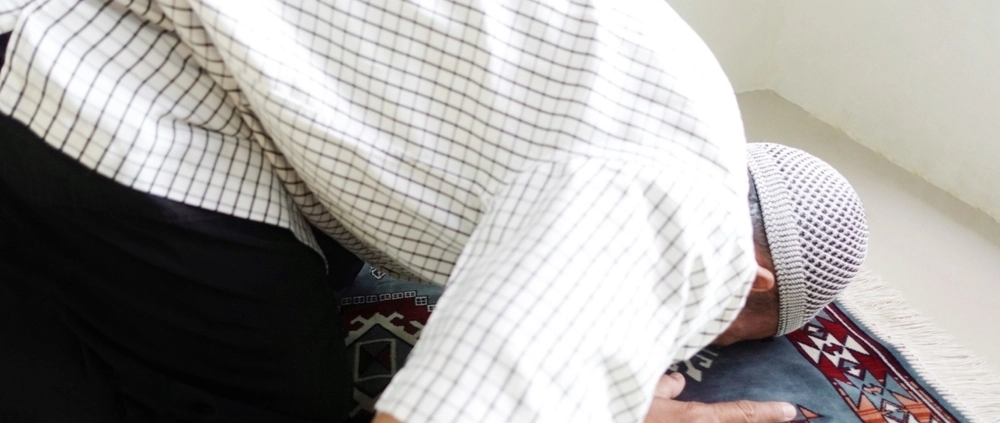What is The Best Way To Pray Witr?
Answered by Shaykh Irshaad Sedick
Question
What is the best manner to pray Witr, and how many units of prayer does it consist of?
Answer
In the Name of Allah, the Most Merciful and Compassionate. May Allah alleviate our difficulties and guide us to what pleases Him. Amin.
The minimum Witr prayer is one unit, the maximum optimum is eleven units, and the minimum optimum is three units.
The best time for Witr is after the sunna prayers of ‘Isha, but If one intends to pray Tahajjud, it is best to defer Witr to be the final prayer of the night (before Fajr).
Definition and Timing of Witr Prayer
The term “Witr” means an odd number, and this prayer is so named because it is typically performed with an odd number of rak‘as (units of prayer). According to the Shafi‘i School, the Witr prayer is Sunna Mu’akkada (an emphasized Sunna) and can be performed in various ways. [Misri, ‘Umdat al-Salik]
The minimal performance for Witr is one rak‘a, even if one omits the sunnas after the nightfall prayer (‘isha). (Note: Witr of at least three units is obligatory (wajib) in the Hanafi School, and one should try not to omit it.)
The optimal way is to perform eleven units. If one performs more than three units, one should finish with Salams after every pair. The least considered optimal is three units. One separates them by finishing twice with Salams (by finishing two units with Salams and then performing the final unit). [Keller, Reliance of the Traveller]
Recitation in Witr Prayer
It is recommended to recite Surat al-A‘la (Chapter 87) in the first unit of Witr, Sura Kafirun (Chapter 109) in the second unit, and Sura Ikhlas, Falaq, and Nas (Chapters 112-114) in the third unit. [Shirbini, Mughni Al-Muhtaj]
The Intention and Joining Witr’s Units
It is permissible to serially join all the rak‘as of any Witr prayer consisting of three to eleven units by finishing them once with Salams (in the final unit). In that case, and when one’s Witr is only a single unit, one merely intends “Witr Prayer”, whereas, in other Witr prayers performed in pairs (until one reaches the last one), one intends each pair as two units of witr). [ibid.]
Testification of Faith
When joining the units of Witr, one may limit oneself to a single Testification of Faith (Tashahud) in the final rak‘a or recite two Testifications, one in the last rak‘a and one in the penultimate unit.
To recite two Testifications is superior if one separates the final two rak‘as from one another by finishing the penultimate rak‘a with Salams (before praying the final rak‘a by itself).
Otherwise, it is better to recite a single Testification since making Witr resemble the Sunset Prayer (Maghrib) is offensive. More than two Testifications in a joined Witr invalidates the whole prayer. [Keller, Reliance of the Traveller]
The Best Time for Witr
The best time for Witr is just after the Sunna rak‘as that follow the nightfall prayer (‘Isha) unless one intends to offer the night vigil prayer (Tahajjud), in which case it is best to pray Witr after the night vigil prayer (if one usually manages to get up when one has made such an intention. If not, then it is better to perform Witr after the Sunnas of the nightfall prayer (‘isha)).
When one has already performed Witr but decides to pray the night vigil prayer (Tahajjud), one performs the latter’s rak‘as two by two, and there is no need to repeat the Witr or to “make it an even number” by performing one unit before the night vigil prayer. However, it is recommended not to intend to perform prayer between Witr and Fajr. [Shirbini, Mughni Al-Muhtaj]
I pray this is of benefit and that Allah guides us all.
[Shaykh] Irshaad Sedick
Checked and Approved by Shaykh Faraz Rabbani
Shaykh Irshaad Sedick was raised in South Africa in a traditional Muslim family. He graduated from Dar al-Ulum al-Arabiyyah al-Islamiyyah in Strand, Western Cape, under the guidance of the late world-renowned scholar Shaykh Taha Karaan.
Shaykh Irshaad received Ijaza from many luminaries of the Islamic world, including Shaykh Taha Karaan, Mawlana Yusuf Karaan, and Mawlana Abdul Hafeez Makki, among others.
He is the author of the text “The Musnad of Ahmad ibn Hanbal: A Hujjah or not?” He has served as the Director of the Discover Islam Centre and Al Jeem Foundation. For the last five years till present, he has served as the Khatib of Masjid Ar-Rashideen, Mowbray, Cape Town.
Shaykh Irshaad has thirteen years of teaching experience at some of the leading Islamic institutes in Cape Town). He is currently building an Islamic online learning and media platform called ‘Isnad Academy’ and has completed his Master’s degree in the study of Islam at the University of Johannesburg. He has a keen interest in healthy living and fitness.
